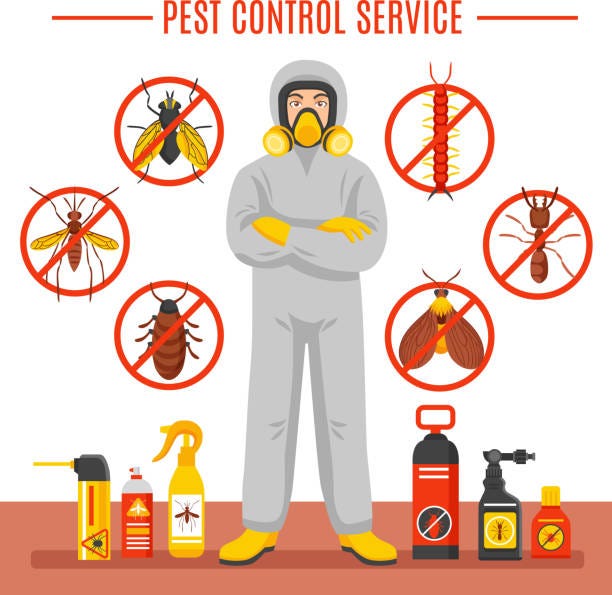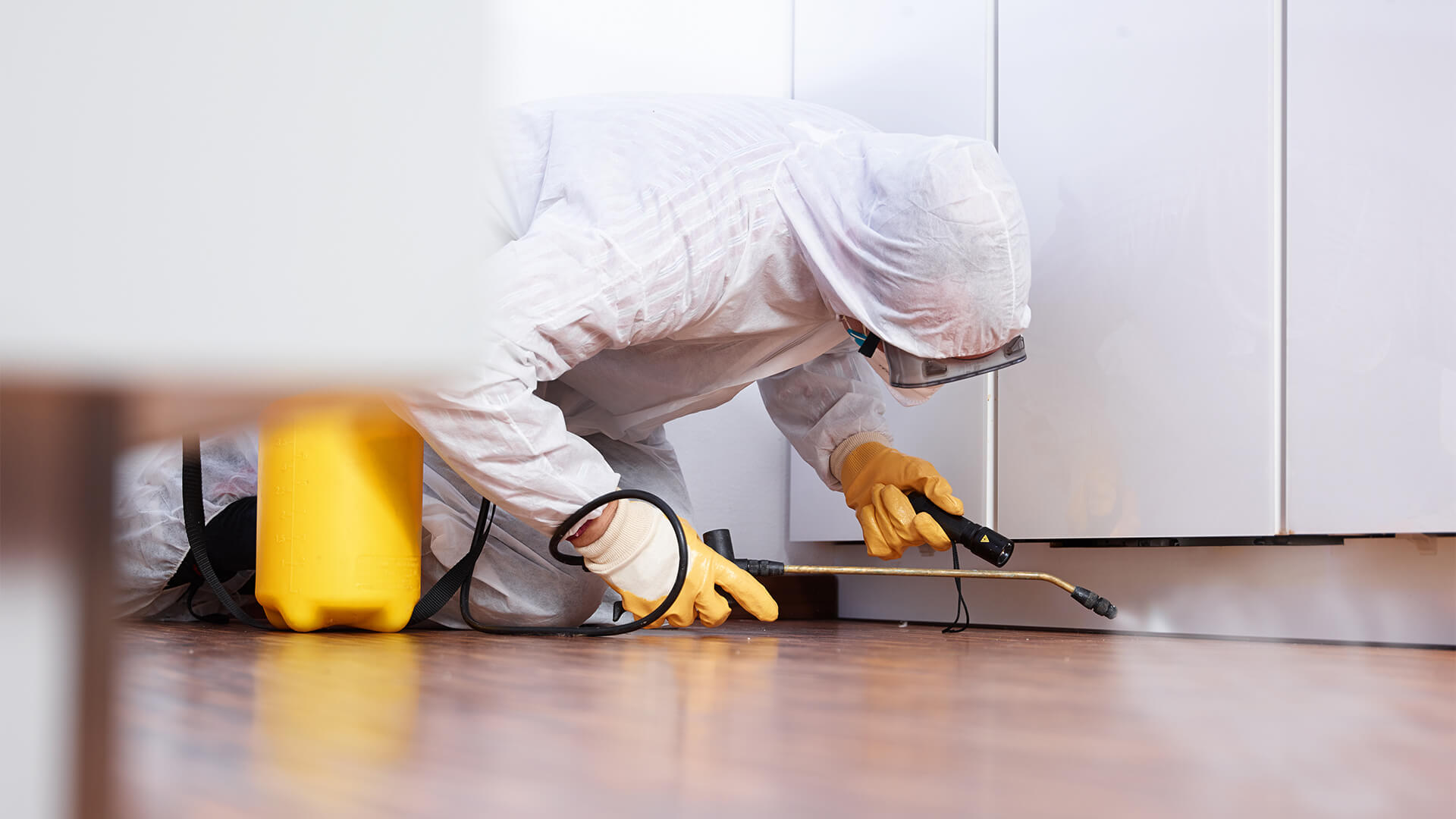Trustworthy A1 Portland Pest Control Bed Bugs - Efficient Solutions
Wiki Article
Efficient Bug Control Services: An In-Depth Check Out Extermination Techniques and Prevention Procedures
In the world of bug control solutions, the effective management of problems calls for a careful method that integrates various techniques and steps for both eradication and prevention. From Integrated Pest Management (IPM) approaches that focus on sustainable remedies to chemical extermination methods created for targeted removal, the collection against parasites is diverse and large.
Integrated Bug Administration (IPM) Strategies
Integrated Bug Management (IPM) Methods encompass an extensive technique to pest control that concentrates on avoidance, surveillance, and control approaches to successfully take care of parasite populaces. By integrating different methods, IPM aims to decrease the influence of parasites while also lowering the dependence on chemical pesticides. Prevention exists at the core of IPM, emphasizing methods like correct cleanliness, maintenance of health, and sealing entry factors to prevent insects from infesting structures. Tracking plays a vital role in IPM by on a regular basis examining and recognizing pest levels to identify the ideal treatment limits. Control methods in IPM focus on the usage of physical, organic, and social approaches prior to transforming to chemical treatments as a last resort. These methods consist of presenting all-natural killers, environment adjustment, and utilizing capturing gadgets to keep pest populations in check. Generally, IPM promotes a ecologically aware and sustainable method to pest administration, advertising long-lasting remedies that secure both human health and the environment.Chemical Extermination Techniques
Chemical elimination strategies are typically employed in parasite control services to successfully remove pest populations that pose a risk to human wellness and building. These strategies entail making use of various chemical substances specifically created to target and eliminate pests such as insects, rodents, and other undesirable animals. The application of pesticides, pesticides, rodenticides, and various other chemical agents is carefully regulated to make certain maximum efficiency while reducing risks to humans, family pets, and the environment.Among the essential advantages of chemical extermination methods is their capacity to offer quick and targeted results, making them particularly valuable in cases of extreme infestations or urgent parasite control requirements - a1 portland bed bug exterminator. Nevertheless, it is necessary to emphasize the importance of correct handling, application, and disposal of these chemical items to stop unexpected harm
Additionally, integrated pest administration (IPM) methods frequently combine chemical elimination methods with various other methods such as hygiene, habitat alteration, and biological controls to develop a comprehensive and lasting pest control method. By integrating chemical elimination strategies deliberately within an IPM structure, parasite control services can properly handle insect populaces while lessening possible risks to human health and wellness and the atmosphere.
Biological Pest Control Methods
Employing natural predators and parasites to handle insect populaces is a sustainable approach recognized as organic pest control. This approach utilizes the natural devices of the community to regulate bug populaces without counting on synthetic chemicals. One common biological control approach involves presenting natural adversaries of the target bug varieties, such as ladybugs for aphid control or nematodes for termite problems. These all-natural predators eat the pests, aiding to maintain their populations in check.Another effective biological control strategy is making use of microbial pesticides. These are normally occurring bacteria, such as infections, fungi, and microorganisms, that particularly target and infect particular bug species. By utilizing these microbial agents, insect populaces can be successfully minimized without triggering or hurting beneficial microorganisms harm to the environment.
Physical Pest Prevention Actions
Implementing physical pest prevention measures involves using obstacles and eliminate wasps structural adjustments to prevent parasites from infesting a home or entering. Setting up door sweeps, screens on windows, and sealing splits in the structure can aid prevent bugs like bugs and rodents from gaining accessibility inside.An additional physical prevention procedure is the usage of barriers like fence to keep bigger parasites such as raccoons or deer away from the home. Installing mesh or cord screens around gardens can safeguard plants from being harmed by pests. Appropriate waste administration, including protecting wastebasket with tight-fitting covers, is crucial in deterring parasites like pests, rodents, and raccoons. By executing these physical parasite avoidance actions, homeowner can significantly reduce the threat of insect invasions and the damages they can trigger.
Specialist Pest Evaluation Treatments
Performing organized and detailed insect examinations is a basic aspect of professional bug management protocols. Specialist insect assessors are educated to diligently examine properties for signs of infestations, determining pest types, access factors, and helpful conditions.
Conclusion
To conclude, pest control contracts efficient pest control services employ a selection of techniques, consisting of Integrated Insect Monitoring approaches, chemical elimination approaches, biological controls, and physical prevention actions. Expert parasite assessment treatments play a vital duty in determining and dealing with pest concerns in a prompt manner. By implementing a combination of these methods, building proprietors can successfully handle and stop parasite infestations.From Integrated Pest Monitoring (IPM) methods that focus on lasting remedies to chemical extermination strategies made for targeted removal, the toolbox versus parasites is complex and huge.Integrated Bug Management (IPM) Methods encompass a comprehensive strategy to pest control that focuses on control, avoidance, and surveillance techniques to effectively handle bug populaces.Chemical elimination methods are see this website generally used in parasite control solutions to effectively eliminate bug populations that posture a danger to human health and home.Using natural predators and parasites to handle pest populations is a lasting approach understood as biological insect control.In conclusion, reliable bug control solutions use a variety of methods, including Integrated Parasite Management methods, chemical elimination methods, organic controls, and physical prevention measures.
Report this wiki page